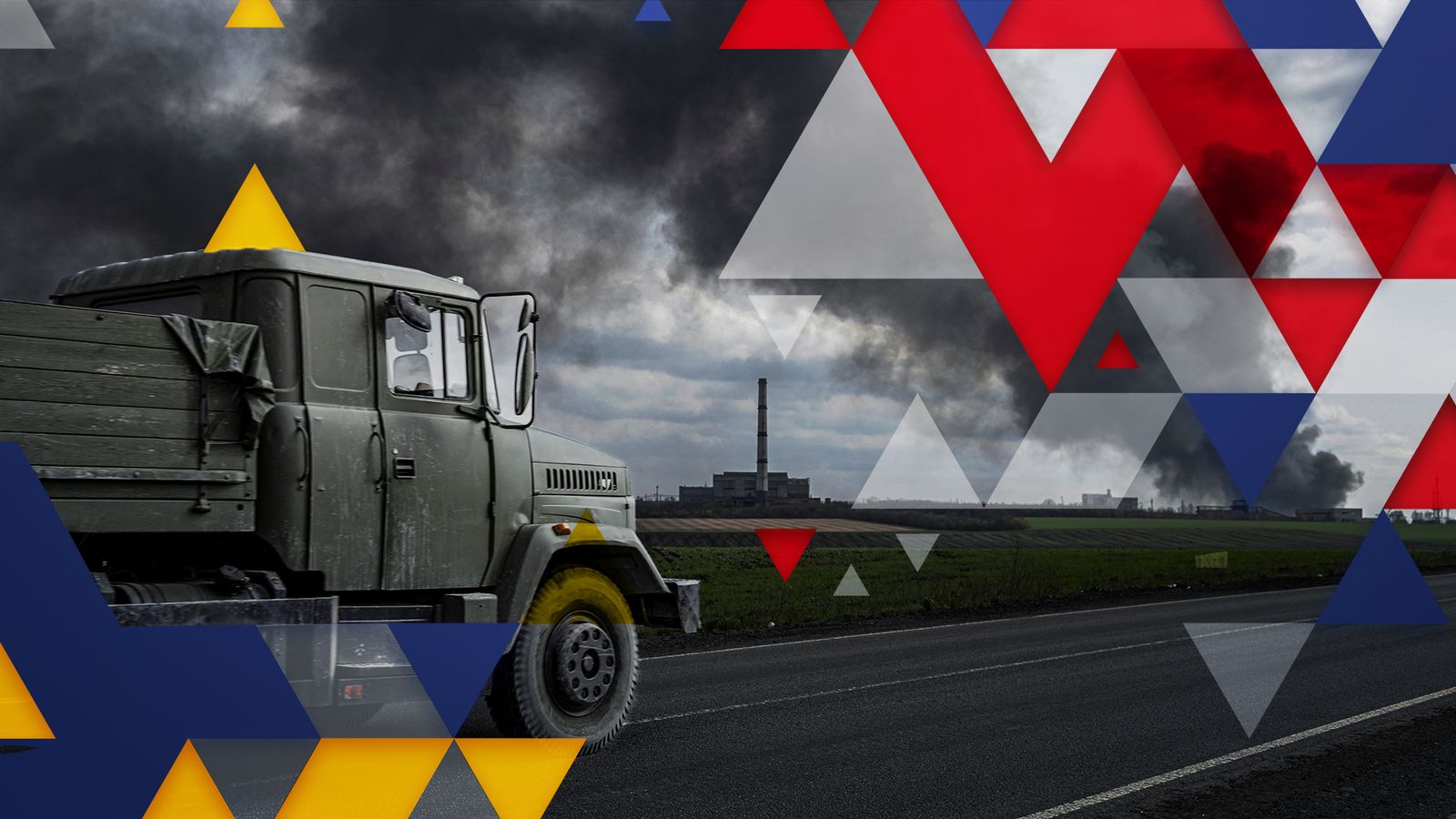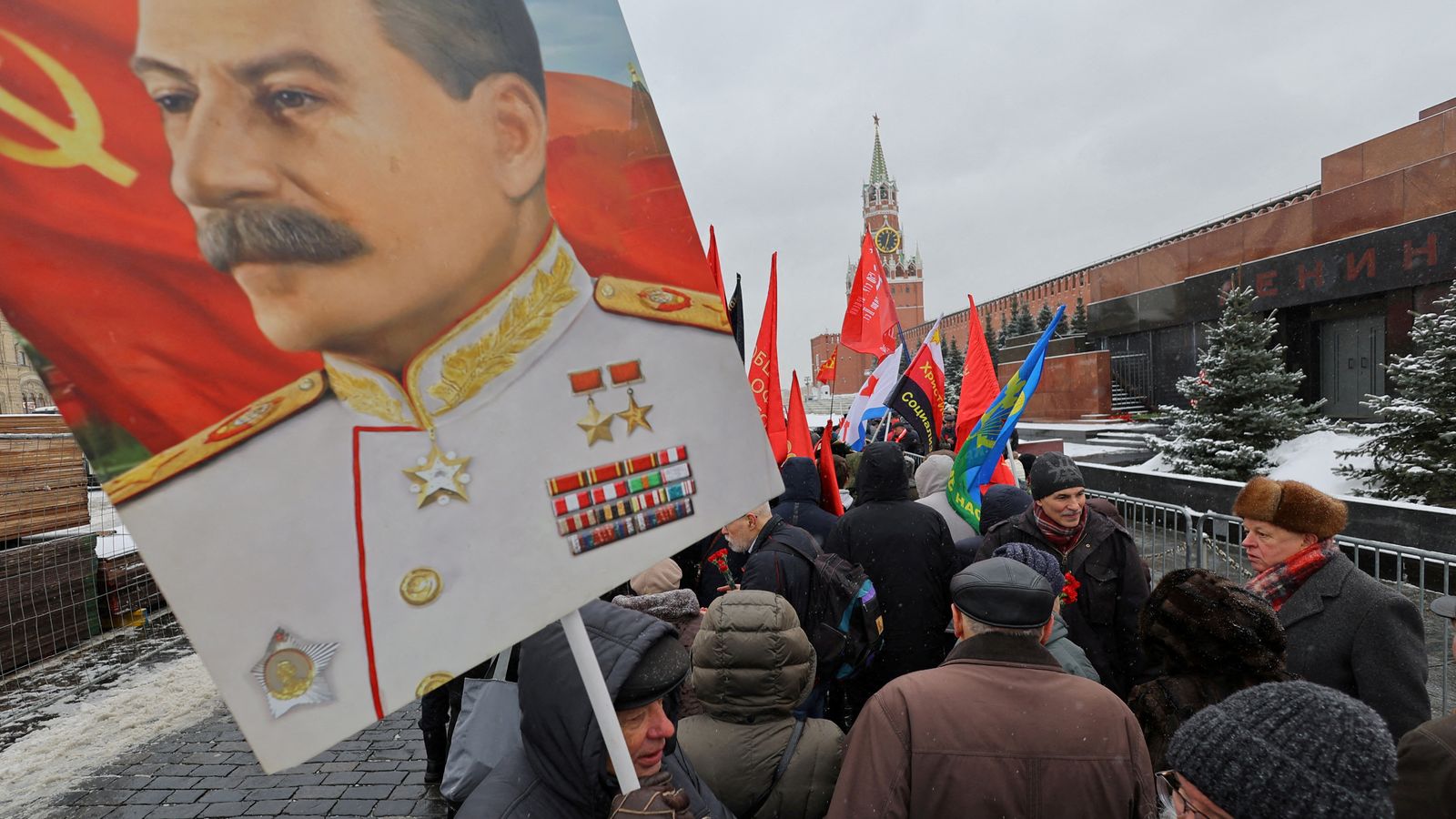Russia has launched its long-awaited all-out assault on eastern Ukraine, according to the Ukrainian government, unleashing thousands of troops in what Kyiv described as the Battle of the Donbas.
The Kremlin has also now declared that its main goal is to capture the Donbas region, after it failed to overrun Ukraine’s capital.
What is coming up is being described the biggest battle of the war so far, with the result being decisive for both sides.
Here is where the action will be focused:
While the exact course of action is impossible to know for certain, because no one knows what is inside the mind of Vladimir Putin, at the very minimum, the Russian president will want to take the breakaway regions of Donetsk and Luhansk, which are known collectively as the Donbas.
Fighting in the regions has been taking place since 2014 and as Russian invaded Ukraine Mr Putin acknowledged the independence claims of the Russia-backed separatists in the two oblasts, as they are called there.
Please use Chrome browser for a more accessible video player
Both Donetsk and Luhansk are majority-Russian speaking areas and a number of Russians regard them as regions that could be justifiably seized by Moscow, as it did Crimea.
Ukraine war: IMF warns of social unrest as effects of Russia’s actions damage global COVID recovery
Ukraine war: British fighters captured by Russians ‘shouldn’t have been in Ukraine’, minister says
Ukraine war: Russia launches attacks along 300-mile eastern front as battle for Donbas begins
On Tuesday, Russia’s defence minister Sergei Shoigu said Russian forces are “methodically carrying out” plans to “liberate” Donetsk and Luhansk.
What is not known is the extent to which Mr Putin is determined to take other areas of Ukraine where Russian is widely spoken, large swathes of which are already under Russian control.
Attacks on Ukrainian targets in the last couple of days have been much wider than just the Donbas.
In the last 24 hours, while Ukraine says assaults have begun along a front of more than 300 miles (480 kilometres) in Donbas, the Russian military has continued to blockade and shell the strategic port city of Mariupol and has fired missiles at other cities.
In the Donbas, according to Ukrainian and other sources, there have been attacks in Donetsk, Luhansk, Sloviansk, Kramatorsk, Marinka, Kreminna, Popasna, Avdiivka, Toretsk, Vuhledar and Mariupol.
Elsewhere, attacks were carried out in Kherson (Kherson oblast), Oleksandrivka (Kherson oblast), Tavriya (Kherson oblast), Mykolaiv (Mykolaiv oblast) and Zaporizhzhia (Zaporizhzhia oblast).
Some of the fiercest fighting has been taking place in the Luhansk town of Kreminna, northwest of Severodonetsk, where on Tuesday Ukrainian troops withdrew from the city.
To take Donetsk and Luhansk, Russia’s forces would have to defeat any Ukrainian forces in the Donbas, where about 40% of Kyiv’s military is currently positioned.
But, analysts believe the Russian tactical aim in the coming weeks is to render that 40% redundant – allowing Mr Putin to win a significant strategic victory, by removing them from the war going forward.
Professor Michael Clarke, a fellow of King’s College London and former director general of the Royal United Services Institute, told Sky News he expects the Russians to push down from Izyum, which the Russians captured in recent days, into the Donbas, where they are expected to face Ukraine’s forces around Sloviansk, Kramatorsk and Severodonetsk.
The battle for Kreminna is the latest in a number expected in the region, with Popasna and Rubizhne also predicted to be key battlegrounds in the coming days and weeks.
Prof Clarke said: “This (will be) the biggest battle of the war, for sure. The numbers on both sides… 40% of the Ukrainian army, plus something like 50,000… 45,000 Russian troops.
“The US Department of Defense thinks the Russians have got 76 battalion tactical groups available – that’s (potentially) somewhere between 61,000 and 76,000.
“The Ukrainians have probably got about 50,000. At the moment, the numbers are equal. The Russians can start to build up their numbers, but they won’t achieve anything like the five to one superiority (they hope will give them an easy victory), except in very specific areas.”
Please use Chrome browser for a more accessible video player
He said it may come down to street fighting if the Russians are forced to push into the cities, but, for now, “the usual warfare by the Russians is against largely fixed positions by the Ukrainians. It’s not entirely one or the other because the Ukrainians are trying to manoeuvre around the edges as well”.
“It’s going to be going to be a very complex, multi-layered battle that will look much more like the battles of the Second World War than anything we’ve seen in the last 50 years,” he added.
Russian victories in places like Sloviansk and Kramatorsk could allow the Russians to encircle some of the most experienced and battle-hardened troops fighting further east. Those forces would then face a choice – fight their way out, or surrender.
Prof Clarke says the Russians will face a major challenge to achieve their goal but the reward may be something they consider worthwhile.
If they can take Donbas, and take the besieged city of Mariupol, where a dwindling force of Ukrainians are holding out in a steel works, it will provide the Russians with the chance to cut the country in two.
Prof Clarke said: “The Russians are trying to push down from Izyum to Mariupol, north to south, but also they’re trying to then meet up with their forces by pushing due westwards from the areas they already control in the Donbas.
“So far, at Rubizhne and Popasna, the Ukrainians are holding them. If the Ukrainians can’t hold them, there will be big east-west arrows, as the Russian push west.”
Ultimately, he said, the Russians would be hoping to push north from Mariupol, to Dnipro and then on to Kyiv, capturing up to a third of the country.







